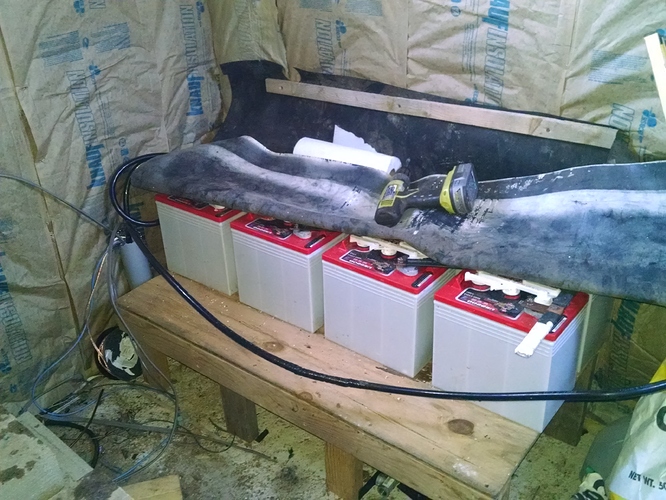Powerjack update
It took me a while to get around to installing the powerjack.
I had previously unbridged the neutral and earth ground in the breaker panel to use the automotive style inverter.
I also needed some new cables, etc.
Anyway, got it installed a couple of weeks ago, and it has been doing daily duty since then (the cabin is 100% solar powered at this point).
So far, the unit seems to be working well.
However, the loads are modest.
The lighting is all LED bulbs. Probably amounts to a couple of hundred watts max with all the lights on.
The major load is a full sized energy star refrigerator which draws around 1100 watts when the compressor is running (with a brief surge significantly higher than that when it starts up).
Also, a box fan which has been running most of the time since it has gotten hot, as well as intermittent loads of a hot plate or crock pot.
The powerjack is installed in the same room as the batteries, inverter, and refrigerator.
It gets pretty warm in there during these 90+ degree days.
And this is the only problem I have seen with the powerjack so far. It will do a thermal reset once or twice a day when it is really hot.
However, it doesn’t do this if the internal fan is left on continuously during these hot spells, which is probably why they added the toggle switch for that.
Also, have done an unintentional torture test on the unit. One light fixture was wired up goofy, and when I reconnected the neutral to earth ground in the breaker panel, it creates a dead short whenever the light switch is flipped. I didn’t mean to test the powerjack this strenuously but, as it turns out, it handles is OK (surging to 4000 watts on that leg, then doing a self-reset).
So far, very satisfied for the money.
Am thinking about the powerjack 15 KW unit for my next (upgraded) system.
The only complaint I have so far is that the terminals for connecting house wiring seem a little light duty to me. I used 6 Ga wire, and they would barely accept it.
